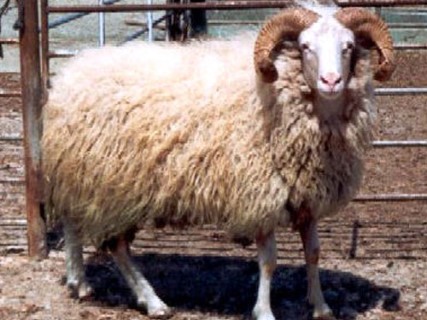Kivircik sheep, native to the northwestern regions of Turkey, are highly valued for their dual-purpose capabilities, providing both milk and meat production for local communities. These sheep are esteemed for their distinctive characteristics, including their unique fleece and robust physical attributes.
The fleece of Kivircik sheep is categorized as a carpet-wool type, renowned for its superior quality compared to other indigenous sheep breeds in Turkey. This fine-quality wool is prized for its softness, durability, and versatility, making it highly sought after for various textile applications.
In terms of appearance, Kivircik sheep typically exhibit a white coloration, with some individuals displaying white or spotted faces. Additionally, black and brown varieties are also observed within the breed, adding to its visual diversity and appeal.
Rams of the Kivircik breed are distinguished by their impressive horizontal spiral horns, which extend sideways from their heads. In contrast, ewes of this breed are commonly polled, lacking horns altogether. This horn characteristic contributes to the breed's distinctive appearance and reflects its genetic heritage.
Another notable physical feature of Kivircik sheep is their long and thin tails, which typically reach the hocks of the animal. This elongated tail serves both practical and aesthetic purposes, aiding in thermoregulation and providing a unique visual characteristic for the breed.
Overall, Kivircik sheep are highly valued for their combination of desirable traits, including their high-quality wool, adaptability to local environmental conditions, and suitability for both milk and meat production. As an integral part of Turkey's agricultural heritage, Kivircik sheep continue to play a vital role in sustaining rural livelihoods and preserving traditional husbandry practices in the region.
